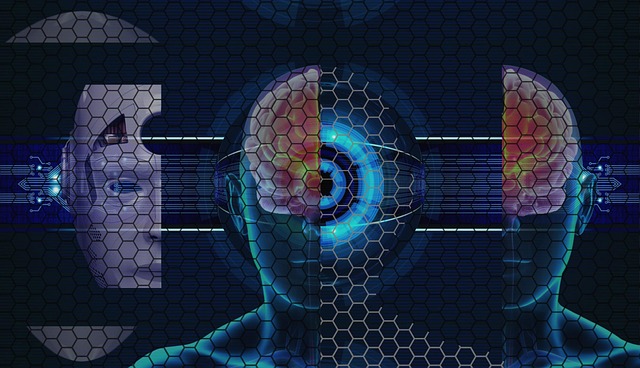Magnetic Resonance Imaging (MRI) and Computed Tomography (CT) scans are crucial for nerve damage imaging, offering distinct advantages based on their unique capabilities. MRI's high-resolution soft tissue visualization makes it superior for detecting subtle abnormalities in the nervous system, while CT scans, with faster scanning times and bone highlighting, are more suitable for acute cases involving potential fractures or calcifications. Combining both techniques provides a comprehensive evaluation for accurate diagnosis and monitoring of nervous system disorders related to nerve damage imaging. The choice between MRI and CT depends on the specific clinical context and imaging questions at hand.
When it comes to nervous system imaging, choosing between MRI and CT scans is crucial. This comprehensive guide delves into the fundamentals of both techniques, highlighting their unique principles. For detailed nerve damage imaging, MRI excels due to its superior soft tissue contrast and ability to visualize structural abnormalities. Conversely, CT scans offer faster acquisition times and are valuable for traumatic injuries or conditions requiring urgent assessment. Understanding these strengths and limitations helps healthcare professionals select the optimal technique for accurate diagnosis.
Understanding MRI and CT Scans: Basics and Principles
Magnetic Resonance Imaging (MRI) and Computed Tomography (CT) scans are two powerful tools in medical imaging, each with unique strengths and applications, especially when it comes to nerve damage imaging. MRI utilizes strong magnetic fields and radio waves to generate detailed images of the body’s internal structures, including soft tissues like nerves. This non-invasive technique excels at providing high-resolution pictures of the nervous system, allowing doctors to detect subtle abnormalities or injuries that might be missed by other methods.
CT scans, on the other hand, use a series of X-ray images taken from multiple angles to create detailed cross-sectional views of the body. While CT is less sensitive in visualizing soft tissues compared to MRI, it offers faster scanning times and is particularly useful for detecting bone fractures or calcifications within the nervous system. In cases where nerve damage is suspected, combining the strengths of both MRI and CT can provide a comprehensive evaluation, ensuring no crucial details are overlooked.
Nerve Damage Imaging: MRI's Edge in Detail
Magnetic Resonance Imaging (MRI) holds a distinct advantage over Computed Tomography (CT) scans when it comes to nervous system imaging, particularly in the realm of nerve damage assessment. MRI’s capability to produce detailed, high-resolution images of soft tissues makes it exceptionally adept at visualizing intricate structures within the brain and spinal cord. This is crucial for detecting subtle abnormalities associated with nerve damage, such as inflammation or demyelination.
The edge of MRI lies in its ability to distinguish between various types of tissue, including nerve fibers, myelin sheath, and surrounding cerebrospinal fluid. This level of detail allows radiologists to identify specific areas of nerve impairment, track their progression over time, and even assess the effectiveness of treatments. Unlike CT scans that primarily highlight bone structures, MRI provides a comprehensive view of neurological conditions, making it an indispensable tool for accurate diagnosis and monitoring of nervous system disorders related to nerve damage imaging.
CT Scan Applications: Limitations for Nervous System Assessment
While CT scans are versatile and widely used for various medical assessments, they have limitations when it comes to nervous system imaging. Unlike MRI, CT scanners primarily use X-rays and computer processing to generate detailed images. While this can provide valuable insights into bone structures and certain soft tissues, it falls short in visualizing the delicate anatomy of the nervous system, including the brain and spinal cord.
One of the key challenges is that CT scans cannot effectively distinguish between normal tissue and subtle abnormalities related to nerve damage. The resolution isn’t as high as MRI, making it less suitable for detecting subtle changes or small lesions within neural structures. This limitation can hinder accurate diagnosis and assessment of conditions affecting the nervous system, such as multiple sclerosis or traumatic brain injuries.
Comparing Techniques: When to Choose Each for Optimal Results
When comparing MRI and CT scans for nervous system imaging, understanding each technique’s strengths is key to choosing the optimal method for specific needs. MRI excels in providing detailed, high-resolution images of soft tissues, making it ideal for nerve damage imaging where subtle structural abnormalities are crucial to diagnose. It offers a non-invasive approach without ionizing radiation, which is particularly beneficial for frequent or follow-up examinations.
On the other hand, CT scans deliver faster acquisition times and higher spatial resolution compared to MRI, making them suitable for acute situations or when rapid assessment of bone fractures or bleeding in the brain is required. While not as detailed as MRI in soft tissue visualization, CT scans can effectively detect calcifications associated with certain nervous system conditions. The choice between these techniques ultimately hinges on the clinical context and the specific questions that need to be answered through imaging.
When deciding between MRI and CT scans for nervous system imaging, understanding each technique’s strengths is key. MRI excels in detailed visualization of soft tissues, making it ideal for assessing nerve damage and its intricate structures. CT scans, while offering superior bone imaging, have limited resolution when it comes to the delicate components of the nervous system. The choice depends on the specific clinical need; MRI is preferred for nerve-related issues, while CT scans are more suitable for traumatic injuries or conditions affecting bone structure. Combining both can provide a comprehensive understanding of nervous system pathologies, ensuring optimal diagnosis and treatment planning.
